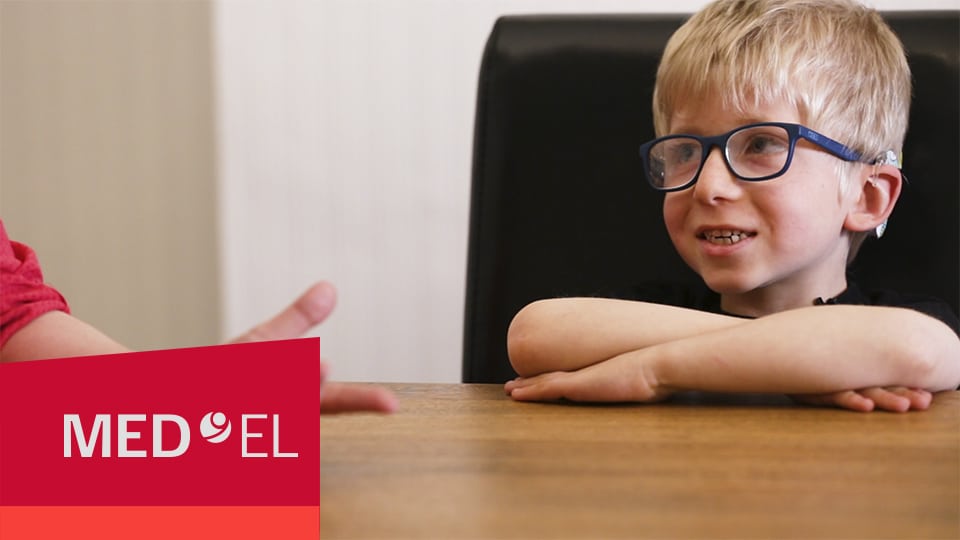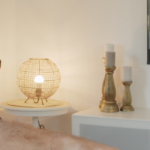MED-EL
Published Jun 12, 2019
Rehab At Home: How Can I Help My Child’s Listening Skills Every Day?

Using your everyday routines is a simple and effective way to develop your child’s listening, language, and speech skills. Children with hearing loss need many hours of listening practice, a rich language environment, and a focus on listening woven into their everyday activities to develop spoken language skills. Adding listening and language strategies to your daily routine is a great way for your child to get this practice!
We’re going to look more at how you can use everyday routines to support your child’s language skills and share some specific examples of what you can do at home.
How Can I Help My Child’s Listening Skills Every Day?
- All waking hours: One of the most important things to do every day is to help your child wear their device/s (cochlear implant/s, hearing aid/s) all hours they are awake. Build the expectation that your child will put on their device/s as soon as they wake up in the morning.
- Ling Sound Test: Your child’s device/s also need to work properly to ensure they have access to all the sounds of speech. Young children may not always tell you if their device isn’t working so use the Ling Sound Test and do a device check every day.
- Talking more during daily routines: Research by the Thirty Million Words Project shows that when parents talk more to their children, their children have larger vocabularies and become better readers.
- Talk to your child about what they are doing, looking at, or thinking about.
- Talk about all the details of what things look, feel, smell, taste, and sound like.
- Talk about actions, locations, problems, emotions, and thoughts.
- Add books to your daily routines to allow you to talk with your child about topics that don’t come up in everyday life, such as outer space and safari animals.
- Listening first: Give instructions to your child throughout the day using words first. If your child is unsure of what to do, then add contextual cues and natural gestures. In order words, say before you show. For example, tell your child it’s bath time before you walk into the bathroom and turn on the tap, or ask your child to get their shoes, then point to their shoes if they are unsure what you want them to do. Giving your child instructions through listening first helps to strengthen their listening skills.
In this video, Matthew helps his mother to set the table for dinner. Matthew’s mum takes the opportunity to give Matthew instructions through listening alone to build his auditory memory. She also uses acoustic highlighting to draw Matthew’s attention to the key words in her instructions.
Here are some other ways you can use everyday routines to help your child’s listening and language skills:
How Can I Use Every day Routines With Younger Children?
While changing their nappy, ‘Talk more’ throughout this routine:
- Talk about your actions (lift you up, wipe, clean, change your nappy) before you do them, and again while you are doing them. For example, say ‘it’s time to change your nappy. I will lift you up, up, up’ before you lift your child onto the changing table.
- Talk about concepts such as dirty, clean and smelly. Remember to use these words in short phrases and with a sing-song voice (parentese). For example, ‘Your nappy is dirty. We have to change your nappy’.
- Add a song to your routine.
When helping them dress:
- Give your child instructions to listen to and then find the items they need for dressing. For example, say ‘get your red shoes’ or ‘find your blue sweater’. You can increase the length and complexity of your instructions to continue to extend your child’s skills
- Teach sequencing words such as first, next, after and then. Use these words as you are dressing your child. For example, you could say ‘first we have to put your socks on, and then your shoes’ or ‘after we put your t-shirt on, we will put your sweater on’.
How Can I Use Everyday Routines With Older Children?
When getting ready for school give your child instructions to follow through listening:
- Give them an instruction with a list of items they need to pack their bag. For example, remind them to ‘get your homework, hat, and water bottle’.
- Give instructions with sequencing words such as before, after, first, then and next. For example, ‘before you get dressed, eat your breakfast’ or ‘after you eat your breakfast, go and brush your teeth’.
At meal times encourage your child to help you set the table or find the utensils for your family for dinner:
- Give them instructions including concepts of size, shape and location: ‘Give Dad the large The round plate is for me,” or ‘Find the salad bowl. It’s in the top cupboard on the left’.
Think about your other household routines and how you can include your child in those routines to provide them with listening practice and a rich language environment.
Interested in more from Rehab At Home? Check out all the videos on our Rehab At Home intro page.
Find out more about how cochlear implants work and how they could help you or your child.
MED-EL
Was this article helpful?
Thanks for your feedback.
Sign up for newsletter below for more.
Thanks for your feedback.
Please leave your message below.
Thanks for your message. We will reply as soon as possible.
Send us a message
Field is required
John Doe
Field is required
name@mail.com
Field is required
What do you think?
© MED-EL Medical Electronics. All rights reserved. The content on this website is for general informational purposes only and should not be taken as medical advice. Contact your doctor or hearing specialist to learn what type of hearing solution suits your specific needs. Not all products, features, or indications are approved in all countries.
MED-EL


